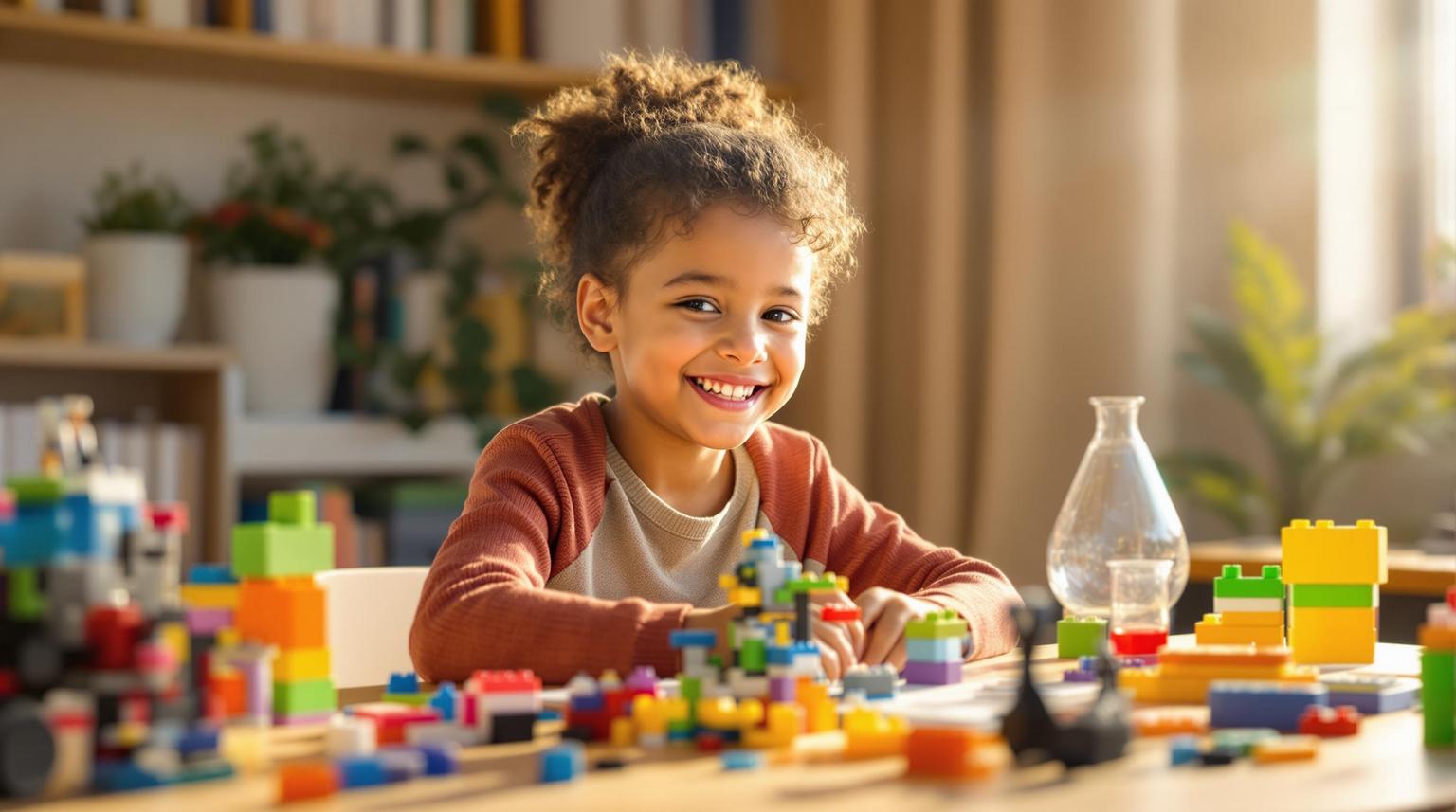Here’s why it matters: EI helps kids understand and manage their feelings, connect with others, and handle challenges better. Empathy - a key part of EI - makes kids better at resolving conflicts, forming friendships, and appreciating diversity.
Quick Tips to Build EI:
- Model empathy: Show kids how to listen, share emotions, and solve problems calmly.
- Talk about feelings: Use tools like emotion charts or stories to make emotions relatable.
- Try empathy activities: Play games like emotion charades or read books like The Rabbit Listened.
- Use apps: Tools like Daniel Tiger's Grr-ific Feelings teach emotions interactively.
- Volunteer together: Activities like food bank visits build compassion and leadership.
Why it works: Kids with strong EI excel academically, feel more confident, and build healthier relationships. Start small - everyday moments are perfect for teaching empathy.
Coping Skills For Kids - Managing Feelings & Emotions
Basics of Emotional Intelligence and Empathy
Emotional intelligence (EI) refers to a set of skills that helps children grow socially and emotionally. Research suggests that EI is twice as important as IQ when it comes to predicting career success. Let’s break down the five main components of EI and explore how empathy plays a key role in child development.
5 Parts of Emotional Intelligence
| Component | Description | Key Development Areas |
|---|---|---|
| Self-awareness | Recognizing and understanding one’s own emotions | Identifying feelings, strengths, and limitations |
| Self-regulation | Managing emotions effectively | Controlling impulses and adapting to change |
| Social Skills | Building strong relationships | Communication and resolving conflicts |
| Empathy | Understanding others’ emotions | Perspective-taking and showing compassion |
| Motivation | Internal drive to achieve goals | Setting and pursuing personal objectives |
Each of these components builds on the others. For instance, being self-aware can enhance empathy. Together, they form the foundation for using empathy effectively in everyday life.
How Empathy Helps Kids Grow
Empathy plays a crucial role in children’s social and emotional development. Kids who are empathetic tend to focus better, engage more, and build stronger relationships. Here are some of the ways empathy supports their growth:
- Conflict Resolution: Empathetic children approach disagreements by understanding different perspectives and addressing the root issues.
- Social Connections: Empathy helps kids form meaningful bonds with peers and family, creating a sense of belonging and support.
- Emotional Regulation: Children with empathy learn to manage their emotions better, staying calm and composed during conflicts.
- Inclusivity: Empathy encourages kids to appreciate diversity and create welcoming, inclusive spaces.
These skills help children avoid aggressive behaviors and foster a supportive environment where they uplift their peers. This, in turn, strengthens their overall emotional intelligence.
Setting Up a Space for Learning Empathy
Creating a supportive environment can help children better understand and manage their emotions. This section provides practical ways to make empathy and emotional learning more relatable.
Leading by Example
Studies confirm that when adults model healthy emotional responses, children become more emotionally aware.
Here’s how adults can show empathy in daily interactions:
| Behavior | Action Steps | Impact on Children |
|---|---|---|
| Active Listening | Make eye contact, nod, and use open body language | Teaches children to pay full attention to others |
| Emotional Transparency | Share appropriate personal emotions and coping methods | Normalizes emotions and shows healthy ways to handle them |
| Respectful Communication | Speak calmly and acknowledge others' perspectives | Encourages positive communication patterns |
| Conflict Resolution | Handle disagreements calmly and find compromises | Demonstrates constructive problem-solving skills |
"Leading by example is critical to showing up as an authentic leader. To really inspire, grow, and build empathetic teams, a leader must model the values and behaviors they are hoping to nurture in others".
Open discussions about emotions further reinforce these lessons.
Talking About Emotions
Encouraging open conversations about feelings helps children build emotional literacy. A safe space where they can express themselves without fear of judgment is key.
Here’s how to create an emotion-friendly environment:
-
Physical Safe Space
Set up a calm area with:- Soft lighting and soothing colors
- Comfortable seating like cushions or bean bags
- Noise-canceling headphones
- Weighted blankets or stuffed animals
- Simple sensory tools like stress balls or fidget toys
-
Communication Tools
Use visual aids and interactive activities, such as:- Emotion charts and mood meters
- Picture books about feelings
- Journals for writing or drawing about emotions
-
Supportive Practices
Reassure children that all emotions are valid. Validate feelings by asking open-ended questions, using relatable examples, or referencing characters they know.
It’s not just about the physical setup - it’s about creating an atmosphere where children feel genuinely heard and understood. Research shows that when parents validate emotions and guide children through them, they help nurture emotional intelligence.
sbb-itb-013deb0
Tools and Methods for Teaching Empathy
Fostering empathy in children can be achieved through practical tools and activities that make emotional learning part of their daily lives.
Hands-on Empathy Activities
Interactive exercises can help kids recognize and understand emotions better.
| Activity Type | Description | Benefits |
|---|---|---|
| Emotion Charades | Kids use facial expressions and body language to convey feelings without words | Improves recognition of non-verbal cues |
| Drawing Emotions | Children create artwork to represent different emotions | Encourages processing and expression of feelings |
| Perspective Taking | Role-playing scenarios from various viewpoints | Develops understanding of others' experiences |
| Kindness Chain | Add paper links for acts of kindness observed | Promotes positive behavior and awareness |
"Name it to tame it" - Dr. Dan Seigel
Here’s how you can combine these activities effectively:
- Start with tools like mood meters to help kids identify their emotions.
- Use modeling clay to create facial expressions that match specific feelings.
- Encourage acts of kindness and reflect on them to deepen emotional understanding.
These activities work well alongside resources like children's books designed to teach emotional intelligence.
Books That Teach Emotions
Children's books are an excellent way to explore emotions and empathy. Here are some great options:
| Book Title | Author | Key Themes |
|---|---|---|
| The Color Monster | Anna Llenas | Understanding basic emotions |
| Ruby Finds a Worry | Tom Percival | Managing anxiety |
| The Rabbit Listened | Cori Doerrfeld | Practicing empathy |
| Last Stop on Market Street | Matt de la Peña | Showing compassion |
| We're All Wonders | R.J. Palacio | Accepting differences |
When reading these stories with children:
- Look at the illustrations and discuss how the characters might feel.
- Ask open-ended questions to encourage emotional exploration.
- Relate the story to their own experiences for deeper connections.
- Revisit favorite books to reinforce emotional lessons.
In addition to books and activities, digital tools offer a modern, engaging way to teach emotion management.
Apps and Games for Learning Emotions
Digital apps can complement traditional learning methods. Here are some popular choices:
| App Name | Ideal For | Key Features |
|---|---|---|
| Daniel Tiger's Grr-ific Feelings | Ages 3–5 | Interactive songs and activities for emotion recognition |
| Breathe, Think, Do with Sesame | Ages 4–8 | Teaches calming strategies and problem-solving |
| Emotional ABCs Classroom | Ages 4–11 | Helps with emotion identification and regulation |
| Smiling Mind | Ages 8–12 | Offers guided meditation and mindfulness exercises |
To get the most from these tools:
- Pick apps that suit the child’s age and set clear learning goals.
- Encourage applying lessons from apps to real-life situations.
- Use these tools alongside personal interactions to reinforce emotional skills.
Making Empathy Part of Daily Life
Incorporating empathy into everyday activities and community service helps develop emotional intelligence that lasts.
Learning from Daily Events
Everyday situations provide a chance to practice empathy in real-time.
| Situation | Learning Opportunity | How to Apply |
|---|---|---|
| Sibling Conflicts | Seeing different perspectives | Encourage each child to express their feelings and work together on solutions. |
| TV Shows/Movies | Exploring character emotions | Pause to discuss why characters feel certain ways and how they might respond. |
| Playdates | Practicing sharing and kindness | Guide kids through turn-taking and understanding others' feelings. |
| Family Meals | Building active listening skills | Use the HEAR method: Halt, Engage, Anticipate, Replay. |
According to Kids First Services, parents who model empathy significantly influence their children's ability to develop the same skill.
"When kids understand why others feel a certain way, they learn to be more empathetic themselves."
Here are a few ways to make the most of daily opportunities:
- Label emotions in real situations to help kids recognize them.
- Acknowledge feelings during minor conflicts to teach resolution.
- Model balanced emotional responses to show how to handle challenges.
- Turn everyday challenges into teachable moments about understanding others.
While home interactions lay the groundwork, community service takes empathy to the next level.
Helping in the Community
Daily practice builds empathy, but community service strengthens and broadens these skills. The International School of Minnesota notes that children who volunteer regularly gain confidence and develop leadership abilities.
Here are some meaningful activities for different age groups:
| Activity Type | Age Group | Impact |
|---|---|---|
| Book Donations | 5-12 | Teaches the value of sharing resources. |
| Local Hero Support | 6-12 | Highlights the importance of community helpers. |
| Animal Shelter Visits | 8+ | Encourages compassion for animals and their caretakers. |
| Food Bank Sorting | 10+ | Raises awareness about food insecurity while helping others. |
"Kids who make volunteering part of their lives are confident, empathetic, and make great leaders." - The International School of Minnesota
Volunteering also offers other benefits beyond empathy development:
- Boosts academic performance.
- Strengthens social connections.
- Enhances overall well-being.
- Builds leadership skills through hands-on experience.
To make community involvement impactful:
- Start with simple, age-appropriate activities.
- Talk about the experience before and after volunteering.
- Set a regular schedule for service activities.
- Connect their efforts to real community needs.
- Celebrate their contributions to reinforce positive behavior.
Conclusion
Teaching emotional intelligence and empathy takes consistent effort and focus. Studies highlight that children with strong emotional intelligence often show better attention spans, deeper school engagement, and healthier relationships. A helpful approach is the RULER method: Recognize, Understand, Label, Express, Regulate, which provides a solid base for emotional development.
This growth begins at home, where children learn by observing adults and experiencing empathy firsthand. Effective role modeling, planned activities, and involvement in community efforts play a key role in nurturing emotional intelligence.
To reinforce these skills, try the following:
- Create spaces where emotions can be openly discussed
- Practice active listening to show understanding
- Use everyday moments as teaching opportunities
- Participate in community service projects together
"Emotional intelligence lays the foundation for a child's personal growth and development. It empowers them to develop a strong sense of self-worth and confidence." - Nurturing Your Child's Emotional Intelligence: A Guide for Parents
As children grow, their emotional intelligence evolves. Activities that encourage empathy can lead to lasting improvements in relationships and personal development. These strategies set the stage for long-term benefits, such as:
| Key Benefits of Emotional Intelligence |
|---|
| Better decision-making |
| Improved stress management |
| Stronger relationships |
| Leadership skills |


